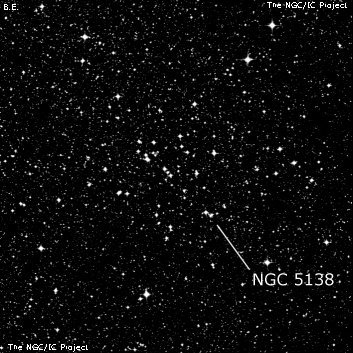
James Dunlop discovered NGC 5138 = D 312 = h3503 on 26 May 1826 with his 9-inch f/12 reflector at Parramatta. He recorded "a pretty large faint nebula, about 5' diameter, irregular branched figure, resolvable, with considerably compression of the stars towards the central point. This precedes a star of the 7th mag, and a group of small stars follows, about 10' north of the nebula." His catalogued position was 14' too far south but Glen Cozens found a transcription error of 20' from his handwritten position, with his original position 6' too far north.
John Herschel tentatively identified his h3503 as Dunlop 312. He observed the cluster twice; on 3 May 1835 he recorded "General middle of cluster VIII. class. pB; L; irr; scattered, 30 or 40 stars 11..12 mag and many smaller; pretty well insulated, though on a ground rich in very small stars." On a second sweep he logged "Cluster VII class; rather a fine cluster; rich, but loose and straggling. Fills field. Stars 11 and 12th mag."
400/500mm - 18" (7/11/05 - Magellan Observatory, Australia): at 228x, roughly 100 stars are visible in a 12' region, though the group is not detached well enough at this power to recognize as a cluster. At 76x (27 Panoptic), barely stands out as a distinct group as it resides in a very rich star field. Includes over two dozen mag stars roughly 11th magnitude. Two mag 8.5/9.5 stars (HD 116721 and 116689) to the NW by 6' and 9' are collinear with the center of the cluster.
Notes by Steve Gottlieb